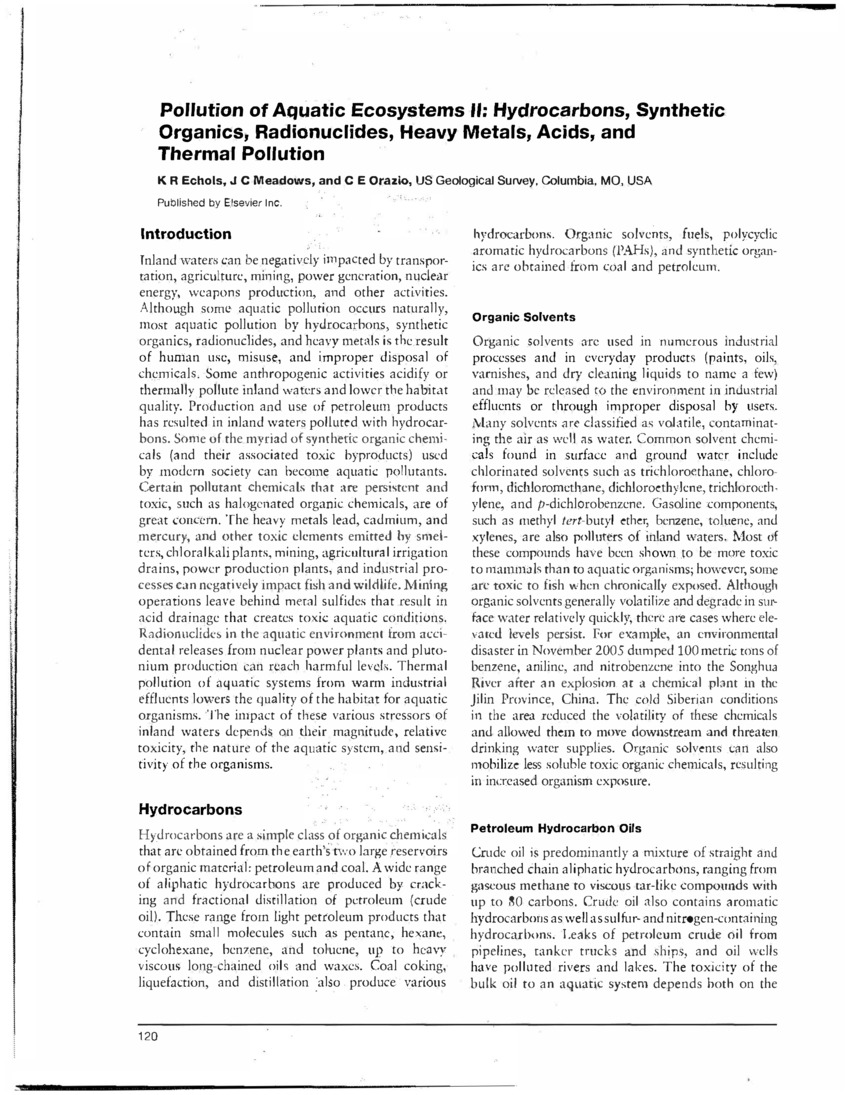Pollution of Aquatic Ecosystems II: Hydrocarbons, Synthetic Organics, Radionuclides, Heavy Metals, Acids, and Thermal Pollution
Inland waters can be negatively impacted by pollution from industry, transportation, agriculture, mining, power generation, nuclear energy, weapons production, and other activities. Aquatic pollution can result of human use, misuse, and improper disposal of chemical products and by-products. Fossil fuel-related industries are potential sources of pollutant aliphatic and aromatic hydrocarbons, inorganic compounds, and metals. Inland waters can become polluted with synthetic organic chemicals, including plastics and plasticizers, flame retardants, pesticides, surfactants, and pharmaceuticals from waste water effluent, spills, and runoff from landfills. Some pollutants are both persistent and toxic and can bioaccumulate in biota in aquatic systems. Heavy metals and other toxic elements emitted by industrial and agricultural activity can negatively impact fish and wildlife populations. Metal mining operations can produce toxic acidic conditions in streams, rivers, and lakes. Accidental releases of radionuclides from nuclear activities have polluted inland waters. Warm industrial effluents negatively alter the habitat of aquatic organisms.
Publisher - Elsevier
Subjects - Chemical, Polycyclic Aromatic Hydrocarbons (PAH); Chemical, Radionuclides; Chemical, Heavy Metals
Collection: Section 5: Contaminants (2014)
Citation: Echols KR, Meadows JC, Orazio CE. 2009 In: Likens GE, editor. Encyclopedia of Inland Waters. Elsevier/Academic Press. ISBN: 978-0123706263 Pollution of Aquatic Ecosystems II: Hydrocarbons, Synthetic Organics, Radionuclides, Heavy Metals, Acids, and Thermal Pollution. p 120-128. http://dx.doi.org/10.1016/B978-012370626-3.00223-4
